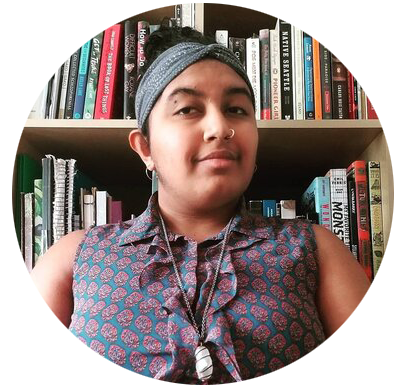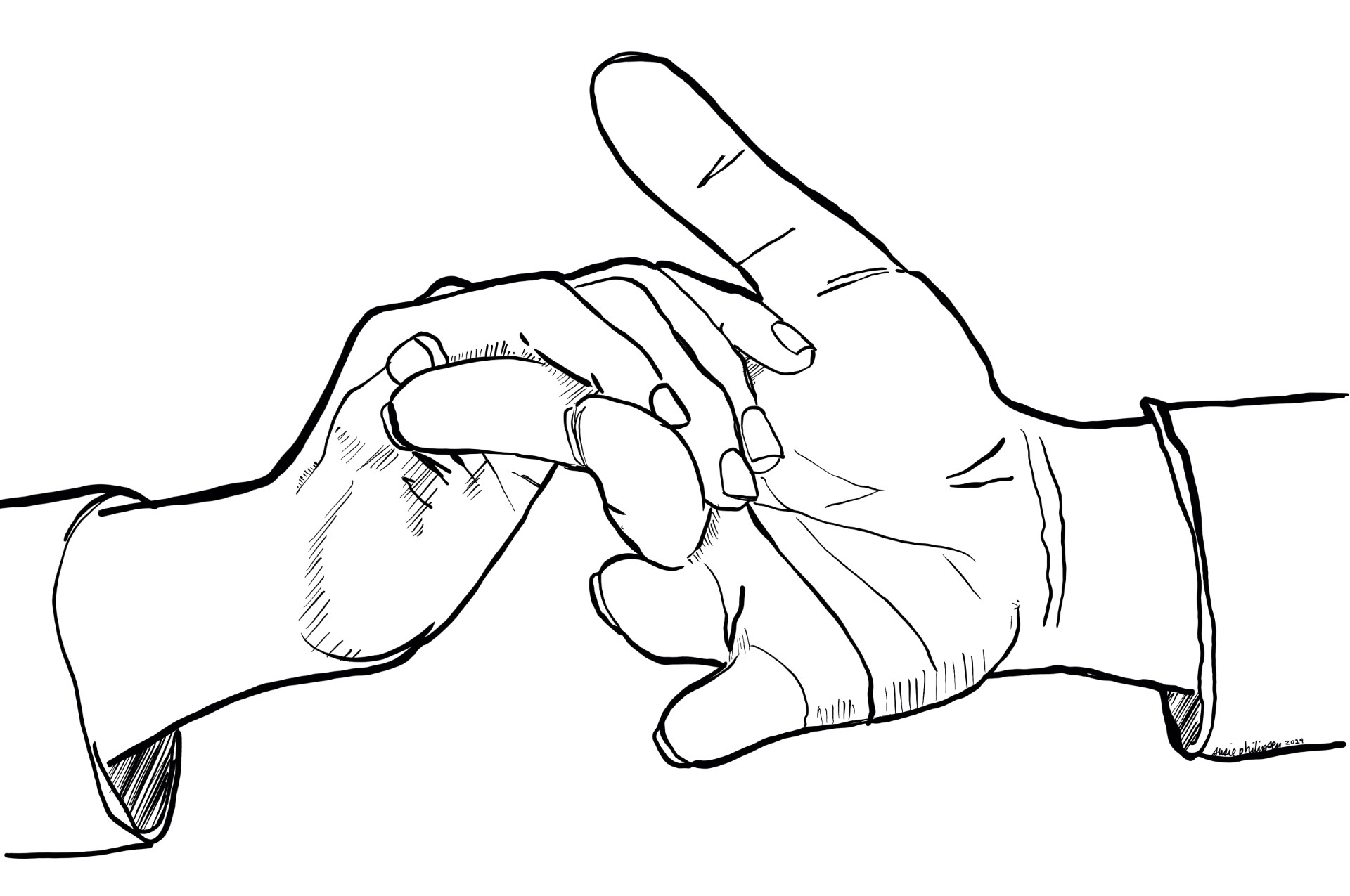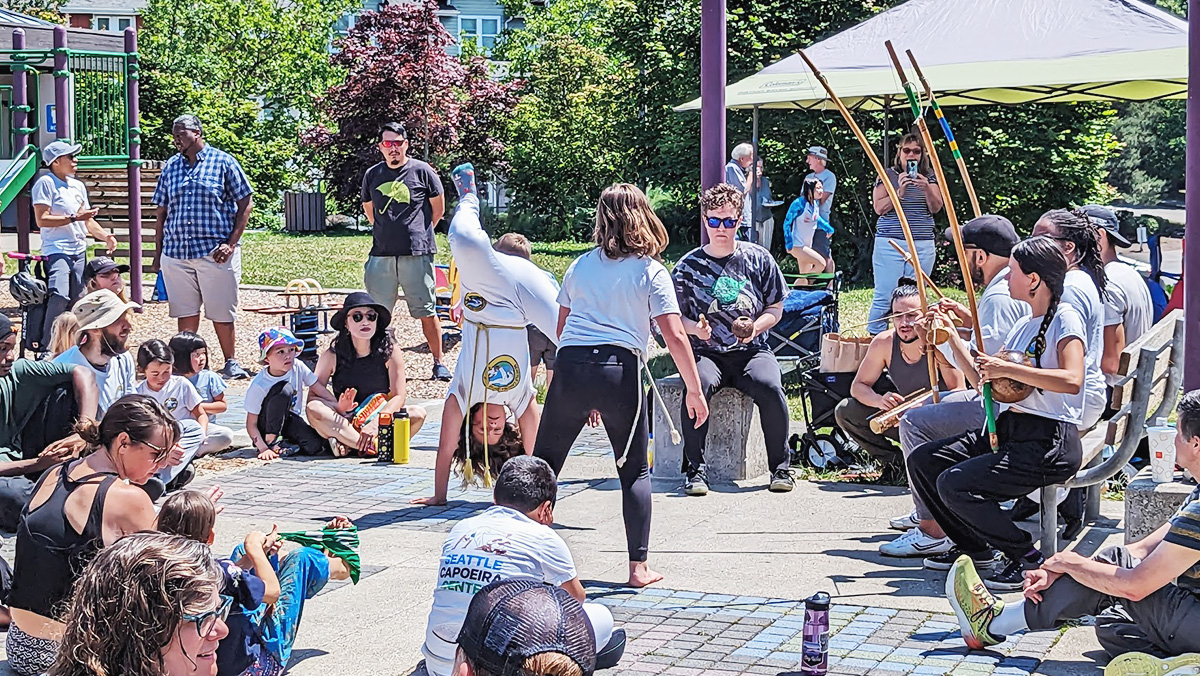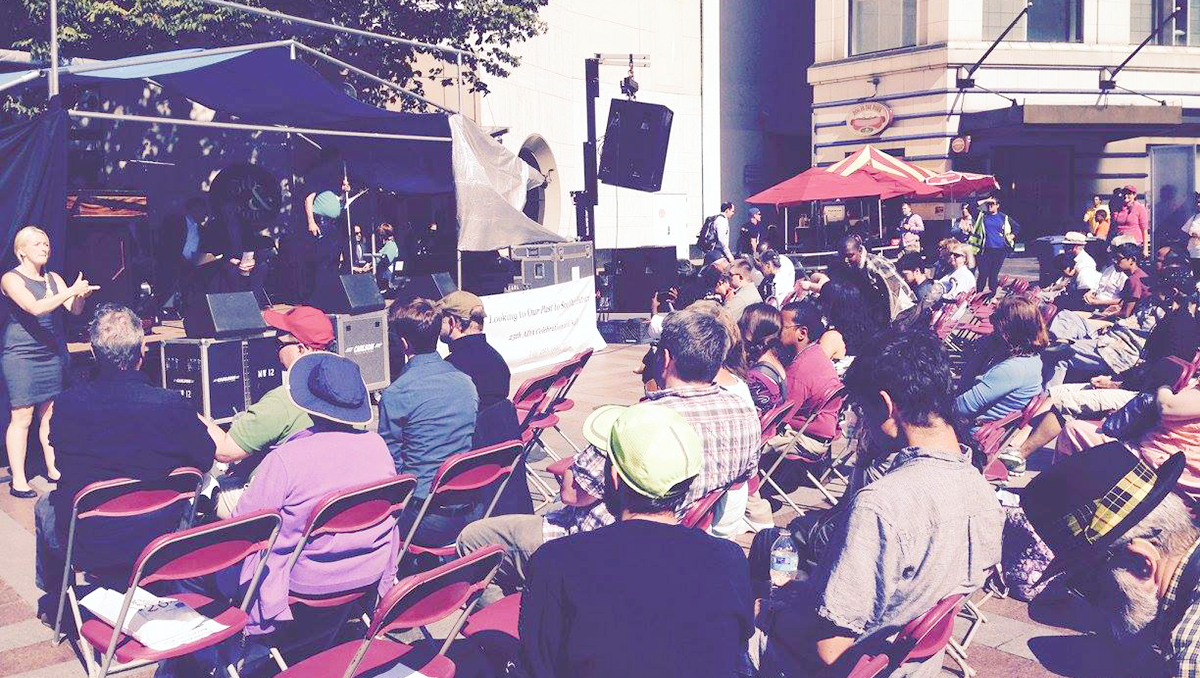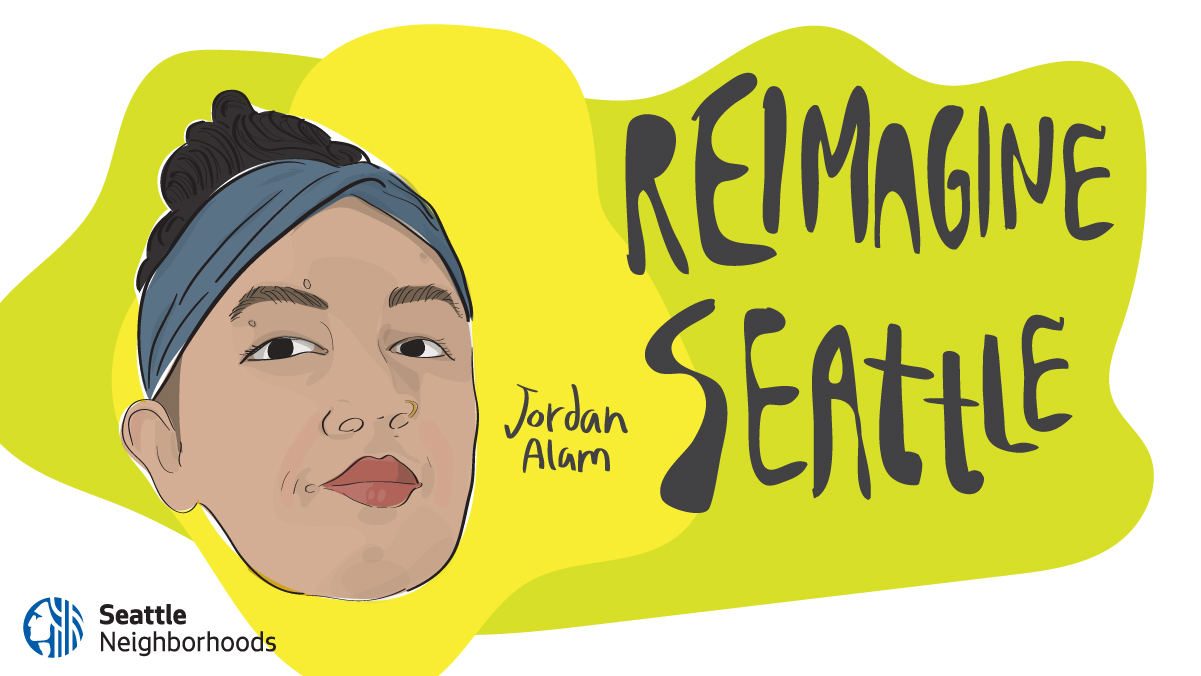
The challenges of the past two years have changed the way we live, the way we work, and the way we show up for each other. They have also given us a rare chance to collectively reimagine our future. Through the Reimagine Seattle Storytelling Project we invite community members to reflect on their current experiences in Seattle, how they have been impacted by recent events, and their hopes for the future of our city.
SAFETY
A client walks into my therapy office in 2022, mask and vaccination required, and we talk about memories. We take them apart. We stitch together the ones that feel like patterns. Most importantly, we feel into them and sit through the discomfort of being transported somewhere else. Sometimes therapy is time travel. In this container, we leave our present reality by choice so as to open up to big feelings of fear, of anger, of loneliness, of grief.
Prior to the pandemic, I was finishing up my graduate program in social work. I took a class on Collective Trauma only months before being pulled from my internship in early 2020. I wish that any class could have prepared me for the profound intensity of being a trauma therapist in the wake of COVID. What I repeatedly notice is how contracted we have become. Our bodies are smart. When faced with trauma, they seek safety in familiar patterns. Many of us have folded into our comfortable shapes – denial, intense independence, distancing ourselves from one another, moving on before we’ve really grieved. These strategies serve us to a point, perhaps were even vital in uncontrollable situations, and yet over time they harm us too. We remain on high alert or, on the flipside, wanton and careless. As my own therapist has said, the best way to process trauma is as it is happening, so that it doesn’t remain unmetabolized as PTSD.
In my practice, I hold loosely to the concept of phases: first, we must establish emotional safety. This can be the longest part of the work. One must be able to tolerate some amount of distress and be able to move in and out of it, rather than be swept away from the present entirely. There’s power in doing this with another person as witness; true safety comes from being together and knowing with confidence that it’s ok to fall apart.
NARRATIVE
No one wants to touch our collective grief. Seattle itself is shaped by so much unacknowledged grief. Gentrification calls back the earlier tragedy of stolen Native land. Police killings of Black people call back body memories of dehumanization and the racist infrastructures upheld to make Seattle predominately white. The pandemic is both a present time trauma and a call back to all those wounds that have not healed. Of course we want to turn away from that enormity. Of course. But then we are giving in to the myth of our own powerlessness.
I cannot claim to speak with any authority on how to transform Seattle, but I think it begins by holding one another in close relationships and in our community spaces. I want us to be able to scream and cry and do what our bodies need to release the tension with one another. I want to feel seen. I want that fierce love that pushes us to better versions of ourselves, more vulnerable and more accountable than before. Those are the mundane miracles I get to witness in session on a regular basis. With gratitude, I get to see someone turn towards a feeling they avoided for so long and name it for what it is.
Narrative is the second phase. When we’re able, we enter the story and give it more room. We prepare for upset, for regression, for tunneling back through the wormhole that collapses present and past onto each other. We regulate and return to emotional safety. We go slow.
Slow doesn’t always feel great. There are material circumstances that need to be addressed through policy and protest right now. Yet I make the case that we need to do this emotional work at the same time. When we begin to integrate the trauma memories into our timeline – not suppressing them nor giving them more power than they deserve – we open up new capacities for change. By staying with the discomfort, we learn to grow.
INTEGRATION
Spend a moment with your eyes closed. Start to notice your breathing. Where does it move in your body? Where does it feel stuck? Begin to notice the sensations – your weight in the seat, the temperature of the air around you, then of your skin, the textures of what you’re touching. Notice any tightness, any discomfort. Any places you cannot feel. What happens when you stay with that place a moment longer? Even just one more breath.
